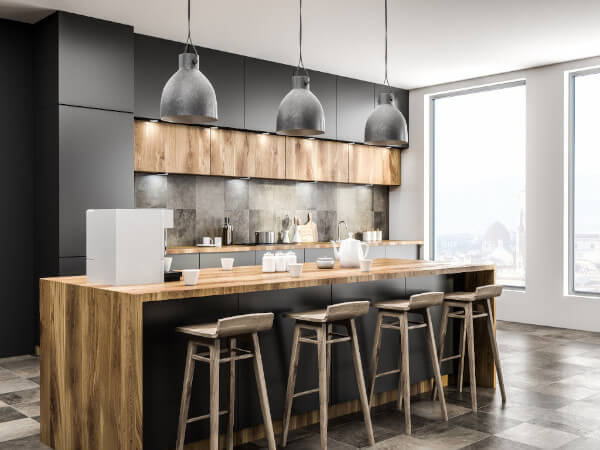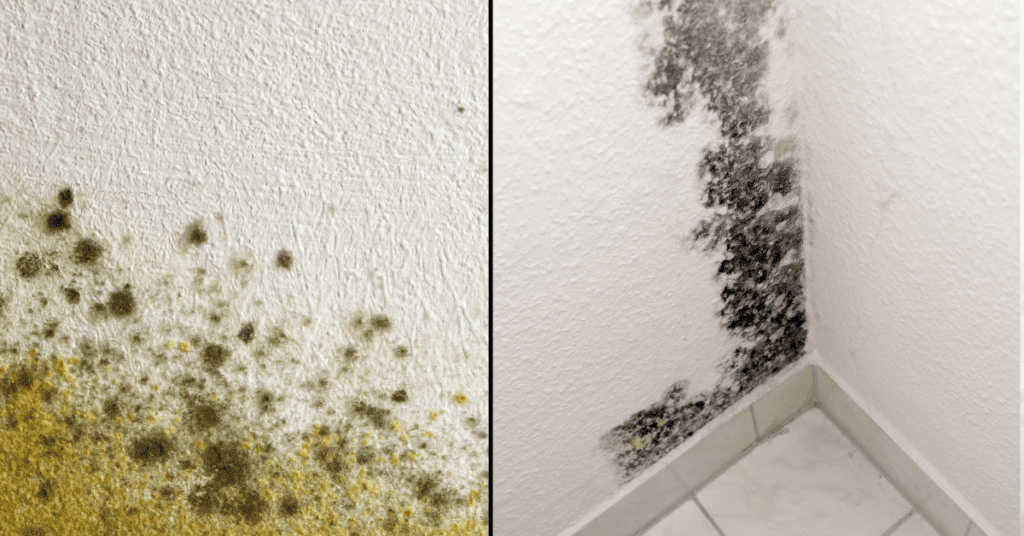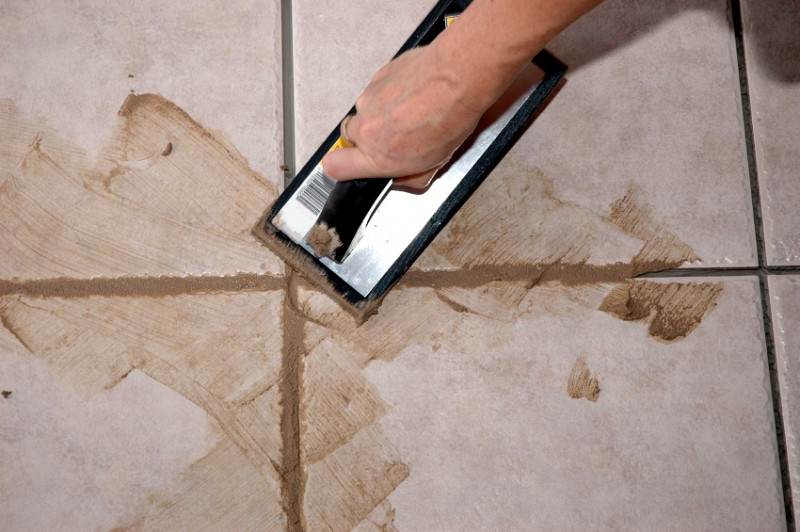Mold and mildew can be a real problem for homeowners, especially if they’re not dealt with quickly.
Mold is notorious for growing in damp areas, such as bathrooms or basements that don’t have proper ventilation. Mildew grows where there is too much moisture present, such as on wet surfaces like windowsills or carpets.
In this article, we will discuss how to remove mold and mildew from your home.
What are mold and mildew?
The two types of mold and mildew work together to grow rapidly and cause health problems by releasing toxic spores into the air which can affect anyone who breathes them.

Image Credit: http://goldeagle.com
This combination can lead to symptoms such as coughing, sneezing, headaches, and difficulty breathing among other things. It’s important to take the issue seriously and eliminate it right away before it spreads any further.
If not, it can cause structural damage to the building and lead to costly repairs.
How do mold and mildew grow?
Mold needs three things to grow: darkness, food, and moisture. Mold spores are everywhere—inside your house or outside, in your plants or the soil. You might even have spores growing in areas of your home that you can’t see.
Mildew needs two of those things to grow: moisture and food. It feeds on a variety of organic materials, including plant sap, wood, paper, paint, and dust. Mildew can also grow on dirty fabrics.
How to clean mold and mildew
The best way to clean mold and mildew is by using a mixture of water and bleach. You can either use a spray bottle or a bucket.
Be sure to wear protective gear such as gloves and a mask while cleaning, especially if the area contains lead paint which can cause lead poisoning if not handled properly.
If the area is too large or the mold is too thick, you might want to consider hiring a professional to take care of it. Here are the steps involved when it comes togetting rid of mold
Clean off the mold or mildew with a solution of water and bleach
You can use a brush, cloth, or sponge soaked in the mixture and gently scrub away at the area.
It’s best to avoid using any chemicals that contain ammonia as this could increase your risk of breathing in harmful spores. Once you’ve finished cleaning, let it dry thoroughly before allowing anyone inside the area again.
Fill up the affected area with hydrogen peroxide then let it sit for 10 minutes before scrubbing it away You can fill up a bucket or spray bottle with hydrogen peroxide and apply it directly on top of the affected areas. Then leave everything alone for about ten minutes until you come back and scrub the surface clean. Use a fan to dry out the area after you clean it to prevent future growths
Now that the area is free of both mold and mildew, simply dry it thoroughly by sweeping or using a vacuum cleaner. Open up all doors and windows inside your home so that there is good ventilation throughout the house.
You can also use a fan for faster drying time if you don’t want to leave anything open overnight.
Be sure to wear gloves when cleaning anything that could contain lead paint, which can cause lead poisoning if not handled properly
Lead poisoning can be very serious depending on how much one has inhaled over an extended period. Make sure you’re wearing protective gear when cleaning any surfaces that might contain such paint.
Inspect the area for any signs of future growth and take steps to prevent it
Mold and mildew can grow back quickly if you’re not careful. Be sure to inspect the area regularly for any new growth and take measures to prevent it from happening again.

Image Credit: http://woodard247.com
This could include fixing any leaks in your home, increasing ventilation, or keeping surfaces clean and dry.
Other surfaces where mold and mildew might need to be removed
Mold and mildew can grow on a variety of surfaces both inside and outside your home. Here are some other areas where you might need to take action:
Basements: Basements are often damp and dark, making them the perfect place for mold and mildew to grow. Be sure to clean any spills or leaks as soon as they happen and increase ventilation by using a fan or opening up windows.Bathrooms: Mold and mildew can form on shower curtains, tile grout, caulking, and even the bathtub itself. Be sure to clean these areas regularly and keep them dry at all times.Sinks: Sink drains are a common place for mold and mildew to grow. Be sure to clean out your drain at least once every two weeks to keep it free of any buildup.Windows: Mold can form on window sills if they’re not cleaned regularly. Be sure to wipe down these areas with a bleach solution whenever you notice the growth of mold or mildew.Cooking surfaces: You might want to avoid using any wooden chopping boards, sponges, or brushes to prevent the growth of mold and mildew whenever you cook.Flooring: Many types of flooring can be affected by mold and mildew including linoleum, wood, and laminates.Vehicles: If left unattended for long periods, mold can grow underneath car seats which may lead to breathing problems.Clothes: Mold and mildew can form on clothing if they’re left to sit for too long without being laundered. Machine washable clothes should be washed after every few uses while non-washables should be cleaned with a solution of water and bleach then hung out in the sun to dry.Stucco: If you notice any areas of your stucco walls that are peeling or bubbling, then there’s a good chance they’re infected with mold. Be sure to scrape off the affected areas then apply an anti-fungal paint or primer directly onto the surface to prevent further growths.Cleaning stucco is a technical process and you should contact a professional if you aren’t sure how to handle it.– Wood: Both the inside and outside of your home’s wood walls need to be properly maintained for them to avoid any serious damage from mold growths. Be sure to inspect these areas regularly and treat them with a protective coating of paint or primer whenever they start showing signs of wear.
Removing mold and mildew from your home can be a bit of a daunting task, but it’s important to take action as soon as possible to prevent any long-term health problems.
Final thoughts on how to remove mold and mildew
In conclusion, removing the mold and mildew from inside your home is a necessary step to take if you want to keep yourself and others safe. Remember, mold and mildew can grow back quickly, so make sure to inspect the affected areas regularly for any new growths.
The post How To Remove Mold And Mildew appeared first on Kitchen Infinity.
Did you miss our previous article…
https://www.thelavkitchen.com/?p=842
